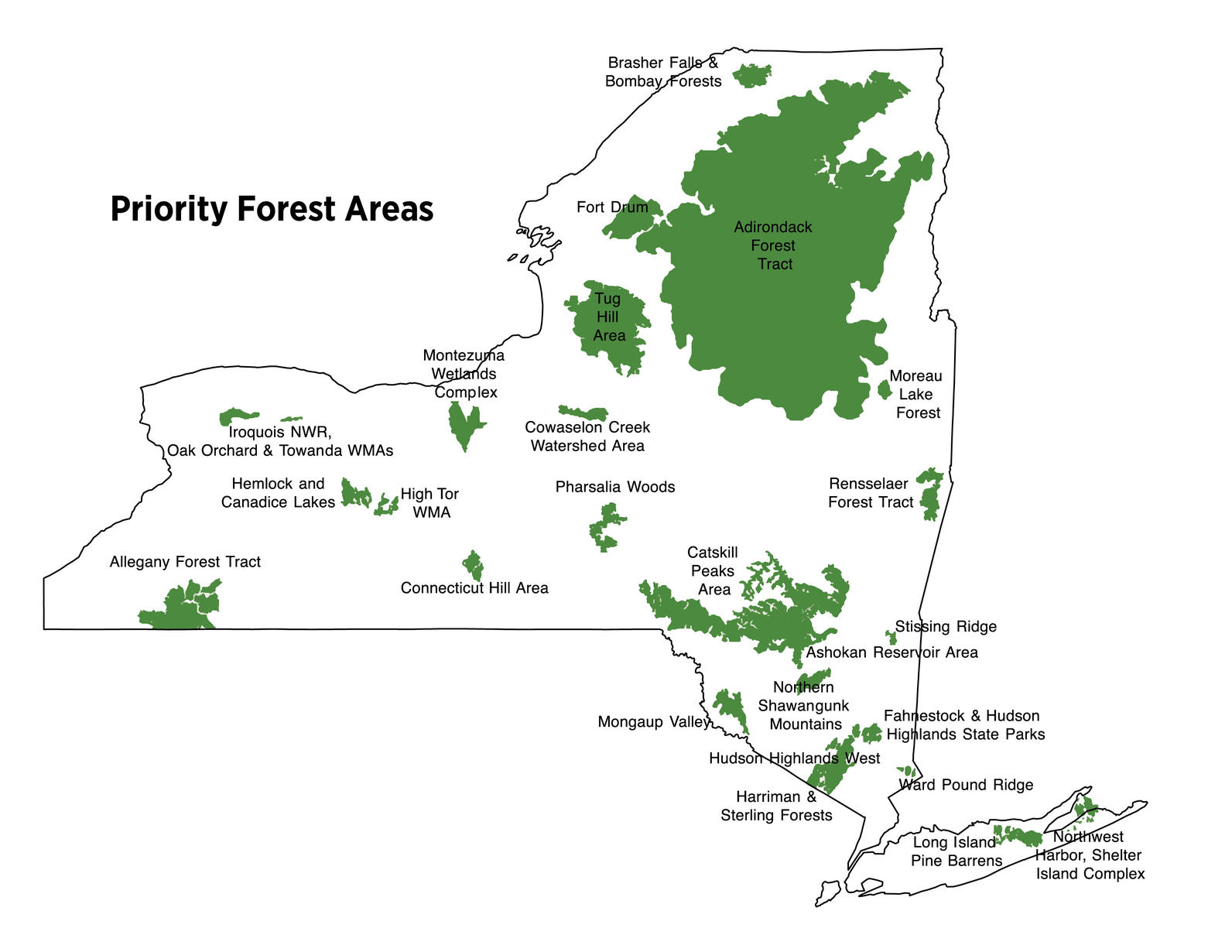Learn more about why healthy New York forests are essential for birds and people.
Forest with high structural diversity. Photo: Nicholas A. Tonelli/Flickr (CC BY 2.0)
New York’s forests offer some of the largest and most intact forested landscapes in the Atlantic Flyway.
Stretching from the Pine Barrens of Long Island, through the Hudson Highlands and Catskills, across the Allegheny Plateau, all the way north to the Tug Hill Plateau and the Adirondacks, New York’s forests are home to more than three dozen bird species of conservation concern.

Although forests in the U.S. have largely rebounded since the height of agricultural land clearing in the early 20th Century, many remain fragmented or provide habitat of poor quality due to incompatible management, invasive species, and overabundant deer, while others continue to be lost to development and stressed by a changing climate.
Healthy forests are resilient to stressors such as climate change and invasive species, and they provide critical ecosystem services that benefit people, including flood control, water quality protection, and carbon sequestration, as well as forest products and recreational opportunities.
Audubon New York is collaborating with other state programs within the Atlantic Flyway to address these threats and to protect and improve forest bird breeding habitat in North America via public programs and private partnerships.
If you are a landowner or manager interested in improving habitat for birds and other wildlife, check out the Healthy Forest Resources. Land owners in or near Priority Forest Areas can fill out our Landowner Assistance Form, and we'll do our best to be in touch in 2-3 weeks.
A globally significant Important Bird Area, the Adirondack region is home to the largest relatively intact tract of forest habitat in New York State.
Guidance for Management of Priority Birds in the Hudson River Valley
Help secure the future for birds at risk from climate change, habitat loss and other threats. Your support will power our science, education, advocacy and on-the-ground conservation efforts.